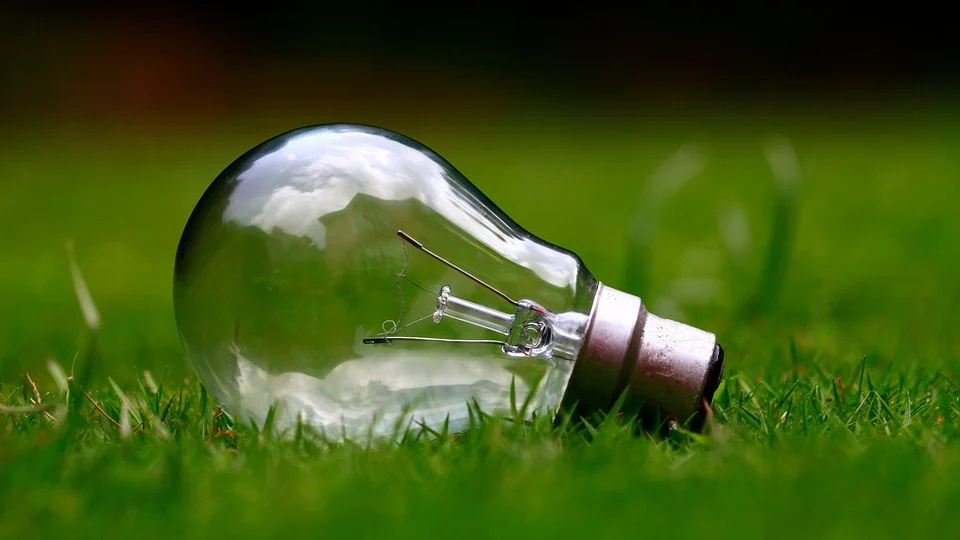How technology can power the UK to net zero
Digital technologies driving UK’s transition to net zero

It was known as the "great British kettle surge" – Brits rushing to make a cup of tea during the ad break of a popular TV show. The phenomenon saw demand for power spike when millions of electric kettles were simultaneously boiled.
Today, the challenges around ‘keeping the lights on’ are of a different magnitude.
Surging demands on the National Grid are now being driven not by the household “cuppa” but by vast data centers.
Chief Value Officer at Bentley Systems.
In fact, National Grid owns and maintains the high-voltage electricity transmission network in England and Wales (Scotland’s transmission network is owned by Scottish Power Transmission in the south and Scottish and Southern Electricity Networks (SSEN) Transmission in the north).
These remotely accommodate services such as AI and other compute applications and are as fundamental to our modern way of living as the television.
The UK’s National Energy System Operator (NESO) has projected that the growth of data centers alone in the UK could add up to 71 TWh of electricity demand over the next 25 years.
Increasing demand
As the net-zero deadline approaches, this increase in demand needs to be met not just reliably, but by sufficient volumes of low-carbon and renewable energy.
Sign up to the TechRadar Pro newsletter to get all the top news, opinion, features and guidance your business needs to succeed!
These include wind, solar, hydroelectric, bioenergy, and clean energy sources such as nuclear, which already provides about one-quarter of the world’s low-carbon electricity and can be generated 24 hours a day.
The UK Government has committed to fully decarbonizing the grid by 2035 as part of the UK’s mission to meet its net-zero targets.
That entails the modernization and adaptation of a power system built around fossil fuels to one suited to geographically dispersed and intermittent renewable energy sources.
It requires significant new infrastructure to connect that renewable energy from where it is generated to where it’s needed by UK homes and businesses.
Climatic tipping points loom – and the economic stakes are high. Business resilience, AI growth and our digital economy depend upon reliable energy sources to underpin them.
Many interconnected strands of work are underway to help manage these hugely complex challenges.
These include major infrastructure projects to scale up the grid and update existing networks, supported by regulators such as Ofgem.
Planning reforms are also underway to shorten approval times for renewable energy projects, including wind farms and power stations.
Technology can play a critical role in both understanding and addressing these challenges.
Technology and transmission
Today’s energy challenges are wicked and, as noted by Nick Winser, the UK’s Electricity Networks Commissioner, the UK has “one of the most complex electricity transmission systems in the world.”
This means our approach must be sophisticated and harness the digital capabilities now available. Digital technologies such as AI, digital twins (living, learning replicas of physical assets), and connected data environments can help adapt, modernize, and expand the network efficiently, reliably, and sustainably.
- Equip decision-makers with better foresight into long-term infrastructure needs
- Accelerate project and infrastructure planning, design and delivery
- Help grid operators anticipate and respond to surges in demand
- Create high-performing, reliable, sustainable long-term infrastructure
It also de-risks massive investments and gives regulators and investors confidence that public money is being spent effectively.
Several energy organizations and innovation bodies are championing digital approaches. For example, the Energy Systems Catapult highlighted that digital twins are becoming increasingly prevalent and provide “a holistic view of the energy system, gaining insight into how various elements interact.”
The benefits of digitalization and ‘tools’ like twins, it said, included the provision of “a holistic view of the energy system, gaining insight into the ways in which various elements are able to interact with each other.”
Ofgem has recognized that digital integration “enables real-time decision-making to manage the energy network intelligently, efficiently, reliably, and sustainably.” Data-sharing infrastructures are also critical to facilitate safe, secure, and efficient digitization.
Essential steps to sustainable energy
Across the industry, utilities are adopting digital tools to modernize energy infrastructure. Some use end-to-end digital design systems, 3D reality modelling, and automation workflows to improve project planning, reduce costs, lower environmental impacts, and enhance safety.
These digital-first approaches accelerate both upgrades to existing infrastructure and delivery of new projects, ensuring that the energy system keeps pace with growing demand while supporting net-zero goals.
Whether upgrading networks or deploying new programs, digital tools are an essential accelerator. For energy security and net zero ambitions, they must be central to any forward-looking strategy.
Now, time for a cup of tea….
We've featured the best green web hosting.
This article was produced as part of TechRadarPro's Expert Insights channel where we feature the best and brightest minds in the technology industry today. The views expressed here are those of the author and are not necessarily those of TechRadarPro or Future plc. If you are interested in contributing find out more here: https://www.techradar.com/news/submit-your-story-to-techradar-pro
Chief Value Officer at Bentley Systems.
You must confirm your public display name before commenting
Please logout and then login again, you will then be prompted to enter your display name.